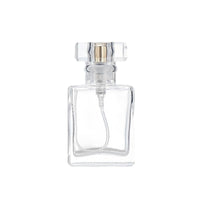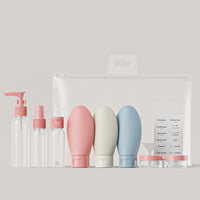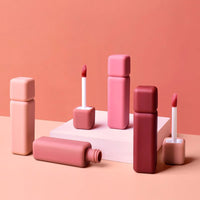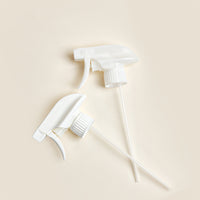Search
-
-
How Many Travel B...
Feb 25, 2025 -
A Korean Beauty B...
Feb 20, 2025
Archive
- March 2025
- February 2025
- January 2025

The Significance of Compatibility Testing for Cosmetic Packaging
Introduction
In the dynamic realm of cosmetic packaging, the importance of compatibility testing for packaging materials cannot be underestimated. It plays a vital role in guaranteeing the harmonious interaction between the packaging and the cosmetics it holds. This article explores the concept of compatibility testing, its different forms, real-world examples in cosmetic packaging, and the key practices for carrying out thorough testing.
Definition of Compatibility Testing
Compatibility testing in cosmetic packaging refers to assessing the interactions between cosmetic products and their plastic packaging. This testing typically includes three primary categories: chemical compatibility, physical compatibility, and biological compatibility.
Test Methods
Extraction Test: This test involves using solvents to extract potentially leachable substances from the packaging material. The chosen solvent should closely resemble the physical and chemical properties of the cosmetic product.
Interaction Studies: These studies include migration and adsorption tests conducted under both accelerated and long-term conditions to evaluate the movement of ingredients and any resulting reactions between the packaging and the product.
Plastic: Examine the material for residual monomers, additives, and degradation byproducts.
Glass: Evaluate the release of alkaline ions, the migration of harmful elements, and the integrity of any coatings.
Metals: Test for the migration of metal ions, potential corrosion, and the durability of coatings.
Rubber: Similar to plastics, focus on the migration of additives and the integrity of any films.
Ceramic: Assess the migration of harmful elements from glazes and the stability of coatings.
Membrane Cloth and Capsule Shell: Test for the presence of additives such as fluorescent brighteners and colorants.
Miscellaneous: Develop specific migration tests tailored to address concerns related to the material in question.
Examples of Compatibility Testing Practices for Cosmetic Packaging
A leading cosmetic company employs tailored procedures to ensure comprehensive compatibility testing for its packaging:
General Compatibility Testing:
Test conditions: -20°C, 4°C, 23°C, 40°C, 50°C, light exposure, cyclic thermal shock, 95% humidity, 30°C
Duration: 4-8 weeks or longer
Stress Cracking Test:
Test conditions: 23°C, 40°C, 50°C
Duration: 4-8 weeks or longer cycles
Post-Processing Compatibility Testing:
Test conditions: 23°C, 40°C, cyclic thermal shock, 95% humidity, 30°C
Duration: 10 days
At the end of the testing period, evaluations include examining the appearance of the packaging, mechanical properties, weight loss, stress rupture, aging, color migration, fragrance stability, and the condition of the contents.
Setting Up a Compatibility Testing Laboratory for Cosmetic Packaging
Establishing a compatibility laboratory for cosmetic packaging demands a strategic focus on human resources. It is essential to bring together cross-disciplinary expertise, involving specialists who are knowledgeable in both cosmetic packaging materials and product formulations. Effective collaboration between departments is crucial to ensure accurate results and to avoid any errors that could compromise the integrity of the compatibility testing process.
In summary, compatibility testing for cosmetic packaging is a detailed process that plays a key role in maintaining the quality and safety of cosmetic products. Real-world examples highlight the risks of neglecting compatibility issues in cosmetic packaging. By adhering to rigorous testing protocols and setting up dedicated laboratories, cosmetic companies can guarantee the reliability and market success of their products.
Contact us
Add: No. 8 Building, Xinchengda Industrial Park, Wuhuan Road, Dongxihu, Wuhan 430040, China
(+86)18963979371
(+86)027-83372627
info@snpacks.com









